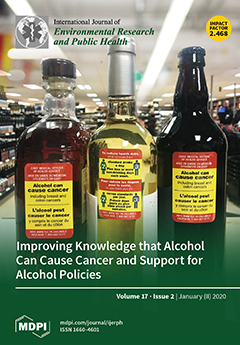We aimed to describe the epidemiology, multi-drug resistance and seasonal distribution of bacteria cultured within 12 months following lower limb orthopaedic surgery in tropical and subtropical Australian hospitals between 2010 and 2017. We collected data from four tropical and two subtropical hospitals. Categorical
[...] Read more.
We aimed to describe the epidemiology, multi-drug resistance and seasonal distribution of bacteria cultured within 12 months following lower limb orthopaedic surgery in tropical and subtropical Australian hospitals between 2010 and 2017. We collected data from four tropical and two subtropical hospitals. Categorical variables were examined using the Pearson Chi-squared test or Fisher’s Exact test, and continuous variables with the Student t-test or Mann–Whitney U test. A Poisson regression model was used to examine the relationship between season, weather and the incidence of Staphylococcus and nonfermentative species. We found that at tropical sites, nonfermenters (
Pseudomonas aeruginosa and
Acinetobacter baumannii) were more common (28.7% vs. 21.6%,
p = 0.018), and patients were more likely to culture multi-drug-resistant (MDR) nonfermenters (11.4% vs. 1.3%,
p = 0.009) and MDR
Staphylococcus aureus (35.9% vs. 24.6%,
p = 0.006). At tropical sites, patients were more likely to be younger (65.9 years vs. 72.0,
p = < 0.001), male (57.7% vs. 47.8%,
p = 0.005), having knee surgery (45.3% vs. 34.5%,
p = 0.002) and undergoing primary procedures (85.0% vs. 73.0%,
p = < 0.001). Species were similar between seasons in both tropical and subtropical hospitals. Overall, we found that following lower limb orthopaedic surgery in tropical compared with subtropical Australia, patients were more likely to culture nonfermenters and some MDR species.
Full article





